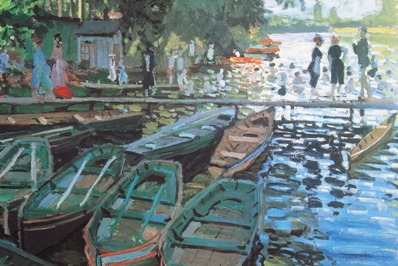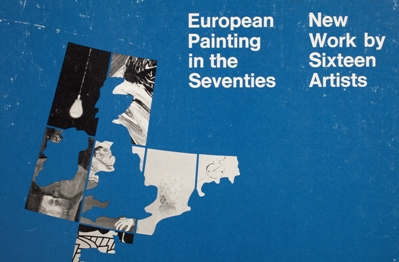One of the pleasures of working in the Publications department at LACMA is the amazing range of subjects we become involved with. Our most recent production is a sumptuous catalogue for the current exhibition India’s Fabled City: The Art of Courtly Lucknow. In April we’ll publish a book documenting an exhibition of the sculpture and photography of David Smith. The remainder of the year holds in store three more substantial catalogues, each accompanying a major exhibition at LACMA.
In the meantime, though, we haven’t forgotten the museum’s long-standing and deep involvement with European art, the subject of the latest group of facsimiles in our Reading Room (joining ten books on Southern California art of the 1960s and '70s and eight books on German Expressionism). I believe this is the richest gathering so far and feel certain that both its broad scope and its specificity will surprise you.
The work included in these ten books ranges from the mid-fourteenth century to 1975. There are monographs on single artists—Georges Rouault, Chaim Soutine, and Edvard Munch.

Edvard Munch, Man's Head in Woman's Hair, 1896, private collection; from "Edvard Munch: Lithographs, Etchings, Woodcuts" (1969)
You’ll find a catalogue of the extraordinary Carter Collection of Dutch masterworks and a book featuring the Ahmanson Foundation’s munificent gifts to LACMA (plans to update both of these are in the works). There’s a volume highlighting the great mannerist prints in the Mary Stansbury Ruiz Collection, and a facsimile of A Day in the Country: Impressionism and the French Landscape, the catalogue of one of the earliest “blockbuster” exhibitions at the museum. Alongside this is the curious little Dressed for the Country: 1860–1900, pairing photographs with lovely pen-and-ink drawings by Charles Dana Gibson.

Claude Monet, Bathing at La Grenouillere, 1869, the Trustees of the National Gallery, London; from "A Day in the Country: Impressionism and the French Landscape" (1990, 2nd ed.)
Italian Panel Painting of the Early Renaissance has a scholarly depth befitting its subject and an elegance that will make you want to hold the physical book. In a nook of its own is the innovative European Painting in the Seventies (1975), a boxed set of eighteen brochures documenting the first U.S. survey exhibition of contemporary European artists in more than twenty years.

European Painting in the Seventies
We welcome your comments and hope you enjoy perusing this new shelf of books we’ve added to the Reading Room.
Thomas Frick, Editor in Chief



